 Here we go again with some more vintage patterns:) These were a wind fall from a retired professional hand knitter. There are some very charming surface textures as well as novel crochet/ knit mixing. As well as some great sideways knitted garments in the baby clothes photos below. There is just too much content to present in one post so I will add more in the coming weeks. Its hard to express how I feel about these acquisitions. I seem to collect books and equipment which are of course technically interesting but which represent the passing of a craft technology skill that should not be disappearing. In fact the majority of my more interesting equipment/ materials have been acquired from individuals over 70 years of age. At some point I'd like to talk about where these people worked and came from and how craft technology was something they built a career around, but I think this post is great as an inspirational one.
1 Comment
 I found these lovely knitting magazines from 1934-35 and I just had to share them:) The style expressed in Lavori Di Maglieria shows an energy and movement in the swatch patterns which I find so charming and the colour palettes seem very contemporary.What is interesting to me is the way knitted fabric is used through a blend of somewhat tailored forms and cut and sew methods. Of course, rib banding is used to finish necks and edges but the combined result is knitwear that looks refined in a manner not always seen in contemporary knitwear. I should qualify that by saying refined knitwear may be seen from the output of computerized industrial machinery, but from the perspective of a crafts-person working in a more analog, manual way, these examples made on industrial flat beds are inspiring and heartening. These magazines may have served to showcase current fashion in knitwear but they also showcased new technology and knitwear advancements through the fashion. There are articles on Dubied MUT jacquard machines and later in the 1950's these types of magazines discuss Discam and Autocam carriage accessories for speeding up cam pattern combinations while knitting. I have amassed a small library of these magazines however I have not come across any beyond the 1960's. I feel this is connected to the rise of computerized industrial machinery in the late 1950's and the difficulties of artisinal knitted work competing against such speed as was found in the most advanced machines of the day. I hope you enjoy these images. I've been a busy bee lately, completing a collection of clothes based upon fashion research. Focus was on early 20th century material production innovation in haute couture houses as response to social change. So there is a lot of handwork and complex stages of cutting, matching and fitting. The following photos are just a few from a recent fashion shoot, with more posted soon in my collections website section.
In other news, which is just as exciting...I am acquiring more industrial machines and an antique linker for professionally finishing and joining knitwear. An opportunity came up that was too amazing to pass up. Although these two subjects may appear divergent, my interest in high quality material production practises draws them together. Black's book "Knitting, Fashion, Industry, Craft" details fine knitwear construction practises in the early 20th century which orients knitwear along side haute couture sewing and lingerie production. I will be posting pictures of these new machines later next week.  Not long ago I began collecting antique knitting machine magazines for inspiration. They have proved to be a wonderful source of patterning and knit silhouettes. These designs come from "Lavori Di Maglieria," an Italian industrial knitting machine publication which seems to have been in print from the 1930's to the mid 1960's. However, there are also publications such as "Revue Du Tricot" and "Tricotuese." Since all of the text is Italian, all I can tell you (with my limited understanding of the text) is that many of these patterns were punchcard patterns for Dubied Jacquard industrial machines ("Tipo Mut"). Punchcard Jacquard machines were the precursor to todays massive computerized machines. Punchcards could control both the shaping on a garment as well as graphic patterning depending on the machine.  Each pattern has a reference number with technical info for colour changes, and the development of texture through tuck and slip. Similar books can be found in domestic knitting machine publications however I feel really attracted to the Art Deco-esque patterns.  I left the surrounding text on the following images for interest. Aren't these textures beautiful?  These are distinctly Art Deco, I have a whole series of these which conjure early cinema, urban city scapes and Modernity. 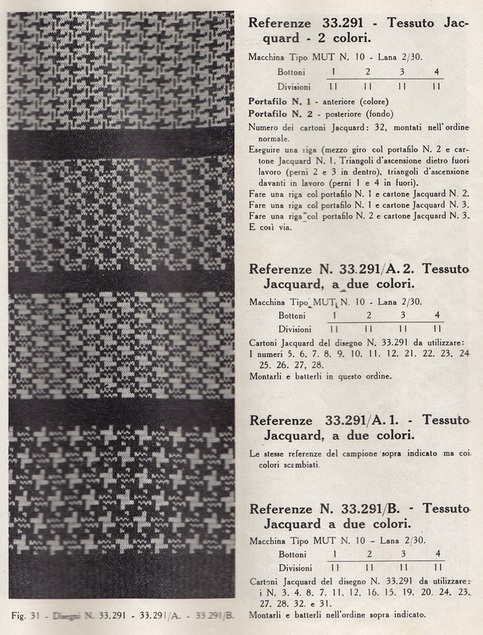 More simple yet charming patterns... Stuart Hall states messages have complex structures of dominance. In his article “Encoding, Decoding” his central argument is fixed around the medium of tv. He breaks down the various ways in which the process of producing “is not a random moment”. This is different from semiotic meaning but the two can certainly be “read” or “received” as one in the same. Semiotic meaning tends to be encoded within layers of frameworks both technical and knowledge based. In the context of a tv show there is input, such as the content as deemed appropriate by those in charge and the way in which it is presented...which is influenced by semiotics and the framework of the tv show ...and then there is the output: the audience views the show through the tv, the tv distorts the filmed image and the audience digests the image on various levels.... The thing is I had never considered how a production process could drive or obfuscate the INTENDED meaning. So the process itself encodes or perhaps formats messages. In the context of fashion design or the sewing industry it is interesting to consider how the process of producing garments encodes and shapes meaning. Sewing industries may be broken down generally into industrial garment making, home sewing and art/ craft sewing. Each avenue shapes and provides a framework of technique and knowledge. This means that the idea and content supported via alternate frameworks may have different outcomes. Further where fashion is involved there may be multiple levels of industry. A slip from the 1920’s is made of components such as lace banding and manufactured cloth sewn together. The various processes which shape those components, the message intended by the designer and the production frameworks all influence the final result. If a designer has access to cloth that is only 60 inches wide, or can only find 3 inch lace banding where she needs something wider the levels of process, meaning and making are altered. Stuart Hall goes on to describe dominant ideas embedded in culture as “hegemonic”, they seem natural and perhaps invisible. The fashion process of construction and assembly is a great example where dominant ideas about sewing technology shape the medium of clothing as if the process itself were taken for granted. Few question and seek out alternate production processes. So what technical and knowledge frameworks are there? What alternate production processes exist? Well, many Modernist designers such as Vionnet and Schiaperelli eschewed dominant approaches and explored humor as content as well ideas about harmonious sewn structures. Balenciaga was another designer who applied knowledge frameworks borrowed from Japan to inform and shape his more western sewing process of producing. Desses, Armani, Gres, McCardell, etc. developed new content, developed alternate frameworks to develop fashion within technique and knowledge frameworks. Looking back we view and read the finished garments in the context of the fashion photo, the fashion runway or in the context of a museum exhibit, these final products of a cultural producers output through the production process obfuscate original meanings. Gres’ production process included haute couture aspects such as hand stitching and custom fitting. Her design process was also informed by the 3-d modelling of cloth onto actual bodies rather than on mannequins or by using technical drawings. Designs made by Gres’ may not have been possible through alternate forms of production.
Current production processes which have the potential to alter outcomes might be laser cutting, digital fabric printing and knitting (as a way to control and form selvedge and edge structures). So you see production is really not a “random moment”, it formats, limits and influences the idea. For my Masters in Fashion studies I have focused on that place in 20th century history where women began to eschew corsets. A new more tubular body silhouette became popular and eventually pushed out the S-shaped Gibson girl of the Edwardian Era. In researching that place of change, I have discovered a world of particular matrimonial, sexual and boudoir social codes which influenced ladies underthings. Here is a visual list of garments (with captioned information where possible) which exemplify the stylistic tension that existed.
|
Anna is a Hamilton based knitwear and textile practitioner blogging about her collection development as well as pre-1950's knitwear technology.
Links
Emma Gerard Make something bookhou Iben Hoej krystalspeck workshop bespoke truckee amy lawrence designs Categories
All
|





















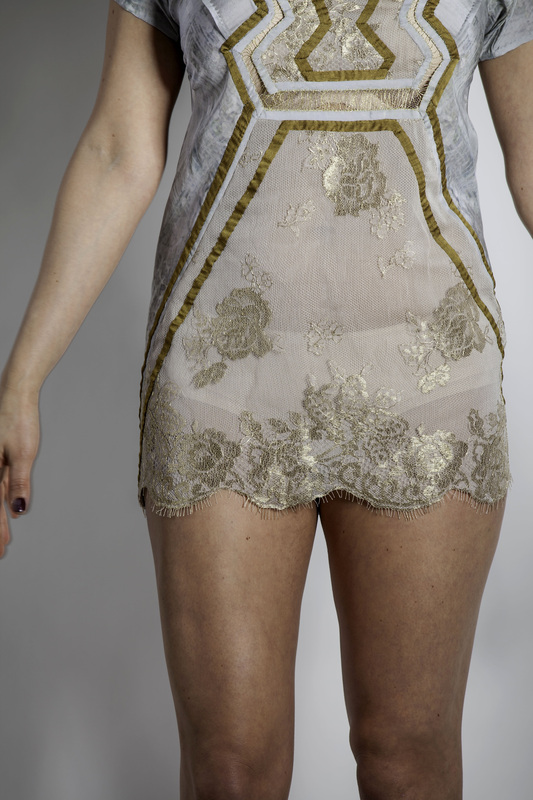







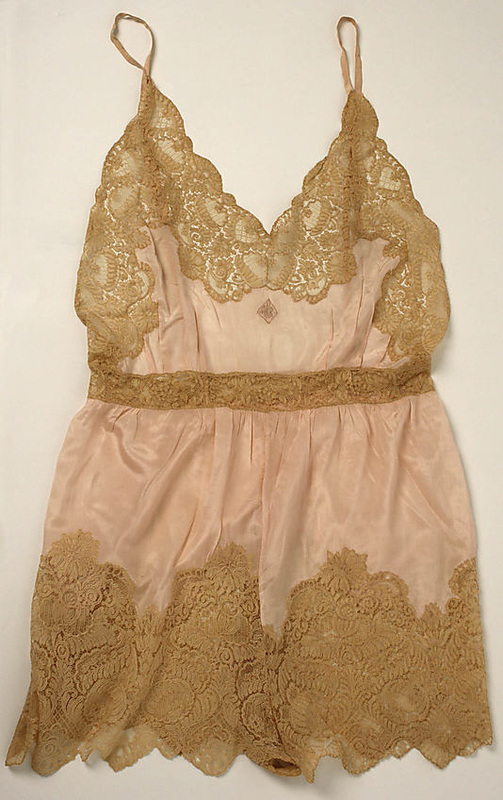





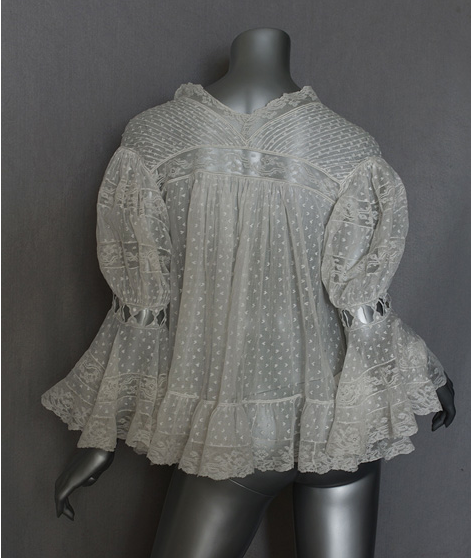
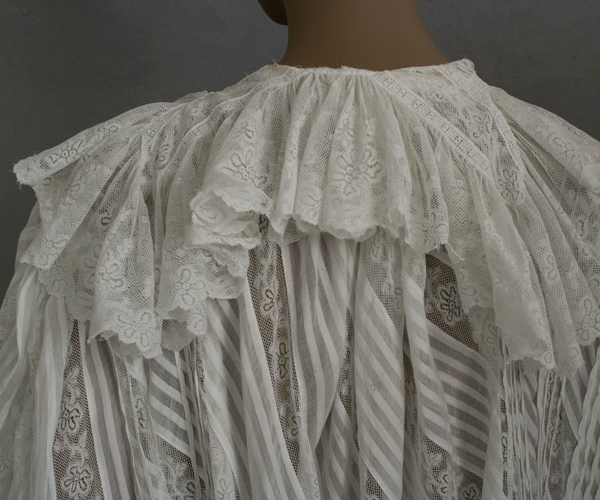

 RSS Feed
RSS Feed